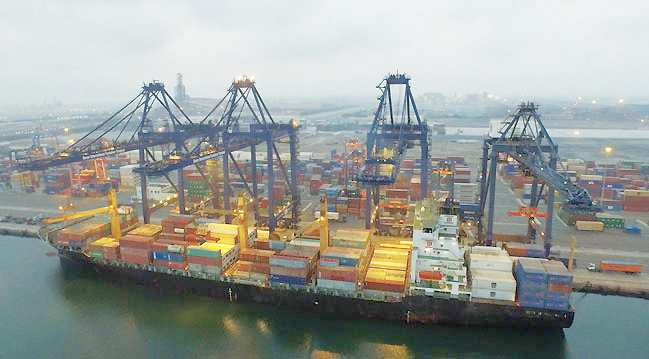

Oman’s fiscal deficit is expected to be curbed to below 4 per cent of GDP in the next two years as revenues are bolstered by the planned implementation of Value Added Tax (VAT) and excise tax, as well as efforts to shore up non-oil earnings, according to the International Monetary Fund (IMF).
The multilateral institution made the assessment in an ‘End-of-Mission’ press release issued at the end of a fortnight-long visit made by an IMF team as part of the 2018 Article IV consultation discussions with Oman.
IMF executive Stéphane Roudet, who led the mission to the Sultanate, praised the government’s efforts to rein in expenditure, boost revenues, and stimulate the growth of the non-oil sector. But he also stressed the need for greater reform designed to enhance private sector efficiency and competitiveness, accelerate diversification and enhance the business climate.
In particular, the world body acknowledged Oman’s response to lower oil prices by bolstering its fiscal position, boosting private sector-led growth and job creation, and fostering economic diversification.
“Preliminary budget execution data point to a significant improvement in the fiscal position last year, on the back of higher oil prices and spending restraint.
The government has made progress in curtailing both current and capital expenditure, helping reduce the breakeven fiscal oil price. Combined with a large increase in oil revenues, this brought the overall deficit down to around 12.8 per cent of GDP from 21 per cent of GDP in 2016,” said Roudet.
“Nonetheless, budget implementation proved challenging, with some spending overruns and tax revenue underperformance compared to the budget. The government is undertaking further reforms to raise non-hydrocarbon revenue, such as introducing value-added and excise taxes, and intends to continue with spending restraint. This would bring the deficit to below 4 per cent of GDP in the next two years,” the official stated.
Of significance, according to the IMF report, is the increase — albeit modest — in non-hydrocarbon economic growth to about 2 per cent in 2017, up from 1.5 per cent in 2016. This was spurred by “higher confidence” in the wake of the rebound in oil prices, which helped mitigate the impact from fiscal consolidation on economic activity, it said.
“The government’s diversification efforts and the planned completion of major infrastructure projects are expected to gradually raise non-hydrocarbon growth to about 4 per cent over the medium term,” Roudet noted.
However, despite the “commendable progress in advancing fiscal consolidation”, the deficit is projected to tick up to about 7 per cent of GDP by 2023, the report warns. This is in line with a gradual dip in the IMF’s oil price assumptions, as well as an uptick in interest payments, it points out.
In this regard, it calls for “substantial additional fiscal adjustment” to be made. These may include efforts to tackle current spending rigidities, centring on the wage bill and subsidies in particular, potential new taxes, as well as moves to streamline the large public investment programme.
Oman’s banking sector comes in for special praise with the IMF report commending efforts by authorities to maintain robust banking sector regulation and supervision which, it said, is key to bolstering financial sector resilience in support of sustained economic growth.
In concluding, the IMF report underlines the need for “structural reforms” that promote private sector development, productivity and competitiveness gains, diversification, and job creation for nationals.
“Further improving the business climate, including by reducing excessive regulations and fostering competition, and accelerating Tanfeedh implementation are also important,” Roudet adds.
Oman Observer is now on the WhatsApp channel. Click here



